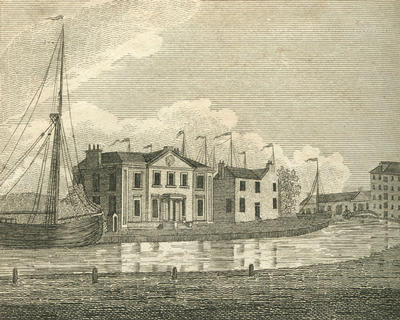
In 1763, the Board of Trustees for the Encouragement of Fisheries, Manufactures & Improvements in Scotland, appointed Yorkshire engineer John Smeaton to survey the route for a canal linking the Atlantic and the North Sea.
When the Canal eventually opened in 1790, it was the biggest single venture undertaken in Scotland up to that time and a source of great national pride. It provided vital trade and transport links, with over 3 million tonnes of goods and 200,000 passengers being transported each year by the mid 1800s. Glasgow’s Canal was at the heart of this boom, spawning industries such as timber mills, glass works and foundries.
Passengers were also able to travel along the canal, with three choices available. The slowest option was to share a truck boat with cargo and take a full day to complete the journey. Passenger-only boats took from three to 6 hours, and folks could also travel overnight on the Hoolets (owls).
Breweries and distilleries also made use of the canal in Glasgow, and indeed Port Dundas was at one time the largest distillery in the world.
Before long the canal was overtaken by the emergence of the railways, and in 1963 the canal ceased to be a viable waterway. Parts of it disappeared under road and bridges
Fast forward to the year 2000 and the Millennium Link project opened up the canal once again, so that it is now possible to sail from Grangemouth to Bowling. Many events are held on the canal banks, and the towpath is extremely popular with walkers, cyclists and joggers. A great deal of development has already taken place and more is proposed for the future.
A useful source for more information about future plans is the Glasgow Canal website, and there is even more information available on Scottish Canals.
